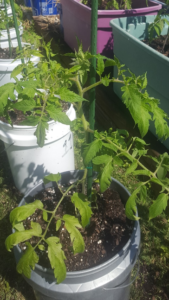Hardening Off Plants & Planting Outdoors
go.ncsu.edu/readext?674556
en Español / em Português
El inglés es el idioma de control de esta página. En la medida en que haya algún conflicto entre la traducción al inglés y la traducción, el inglés prevalece.
Al hacer clic en el enlace de traducción se activa un servicio de traducción gratuito para convertir la página al español. Al igual que con cualquier traducción por Internet, la conversión no es sensible al contexto y puede que no traduzca el texto en su significado original. NC State Extension no garantiza la exactitud del texto traducido. Por favor, tenga en cuenta que algunas aplicaciones y/o servicios pueden no funcionar como se espera cuando se traducen.
Português
Inglês é o idioma de controle desta página. Na medida que haja algum conflito entre o texto original em Inglês e a tradução, o Inglês prevalece.
Ao clicar no link de tradução, um serviço gratuito de tradução será ativado para converter a página para o Português. Como em qualquer tradução pela internet, a conversão não é sensivel ao contexto e pode não ocorrer a tradução para o significado orginal. O serviço de Extensão da Carolina do Norte (NC State Extension) não garante a exatidão do texto traduzido. Por favor, observe que algumas funções ou serviços podem não funcionar como esperado após a tradução.
English
English is the controlling language of this page. To the extent there is any conflict between the English text and the translation, English controls.
Clicking on the translation link activates a free translation service to convert the page to Spanish. As with any Internet translation, the conversion is not context-sensitive and may not translate the text to its original meaning. NC State Extension does not guarantee the accuracy of the translated text. Please note that some applications and/or services may not function as expected when translated.
Collapse ▲Spring is here, the weather is getting consistently warmer every day, and our seedlings that were started several weeks ago are ready to be transplanted to the garden or a container. But wait—we can’t just take them out of their protected environment just yet. They must be hardened off first.
Hardening off is the process of gradually transitioning a plant from their indoor or greenhouse location to the outdoor conditions of fluctuating spring temperatures, wind, and sun exposure.
It’s important to have an idea of the last frost date for our area, which is generally the 1st of April for Eastern North Carolina. In addition, the Guide to Vegetable Gardening in Carteret County gives recommended planting dates for our area. Start the process of moving plants outdoors about two weeks before recommended planting times for the particular crop.

Photo credit: Stacey Luker/Hardening Off Plants
Let’s use tomatoes as an example: The guide states they can be planted April 5–July 30, so two weeks before April 5 if the temperatures are at least 45-50 degrees during the day, move plants outdoors to a shady, protected spot, for no more than 2-3 hours.
Gradually increase the amount of sunlight the plants receive, and time spent outdoors, over the two-week period. The last day or two the plants can spend 24 hours outside. If temperatures fall below 45 degrees bring them back in for the night. Reduce the amount of water the plants receive but do not allow them to wilt.
Again, the overall goal of hardening off is to slow growth of the plants to allow them to adjust to changing weather conditions. Once hardened, even tomatoes can withstand the occasional dip in spring temperatures.
If planting in a traditional garden or raised beds, it is recommended that a soil sample be taken and analyzed prior to transplanting. Please note that due to COVID-19 soil sample requests are only accepted in Raleigh if deemed essential for agricultural purposes only. We will provide an update when this service is available to the public.
If using containers for the plant, make sure they are suitably sized for the variety. This How-To Guide on Container Gardens will provide detailed information on container selection and other requirements. If possible, try to transplant on a cloudy day or early in the morning or later in the afternoon to preclude additional heat stress on the plant.

Photo credit: Stacey Luker/ Hardening Off Tomato Plants
Make sure the plant is thoroughly watered prior to removing from the container. Except for tomatoes, which can be planted slightly deeper, transplants should be planted in the ground at the same depth they were in the container. Water thoroughly, stake if necessary, and fertilize in accordance with Cooperative Extension recommendations.
Written by: Stacey Luker, Master Gardener℠ volunteer




